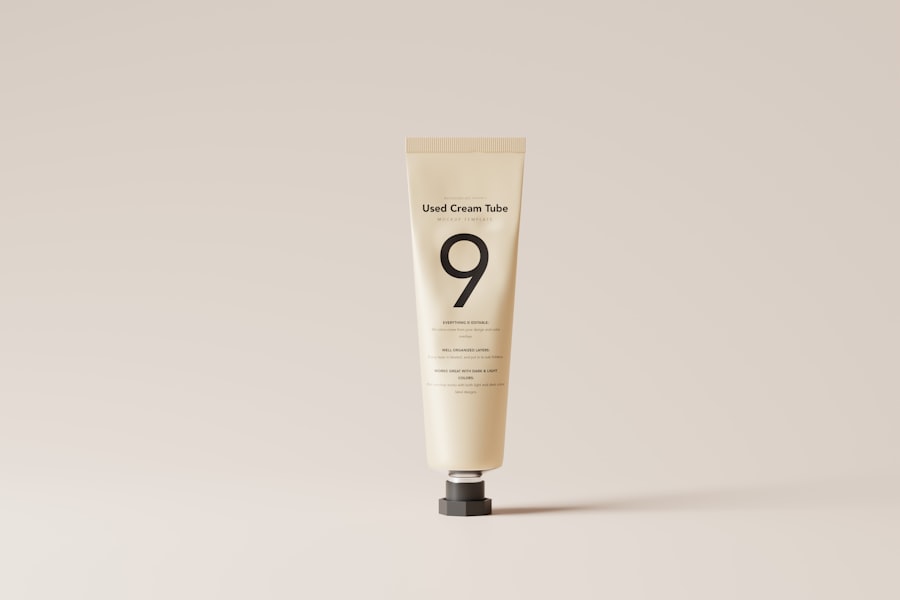Laser hair removal is a popular cosmetic procedure that utilizes concentrated beams of light to target and eliminate unwanted hair. The process works by emitting a specific wavelength of light that is absorbed by the pigment in the hair follicles. This absorption generates heat, which damages the follicle and inhibits future hair growth.
As you consider this option, it’s essential to understand that the effectiveness of laser hair removal can vary based on several factors, including hair color, skin type, and the area being treated. During your initial consultation, a trained technician will assess your skin and hair type to determine the most suitable laser technology for your needs. Different lasers are designed to work best on specific skin tones and hair colors, so it’s crucial to find a practitioner who can tailor the treatment to your unique characteristics.
The procedure itself typically involves multiple sessions, as hair grows in cycles, and not all hairs are in the same growth phase at any given time. By spacing out your treatments, you can achieve optimal results and enjoy long-lasting smooth skin.
Key Takeaways
- Laser hair removal targets hair follicles with concentrated light to inhibit future hair growth
- Shave the treatment area before the appointment and avoid sun exposure and tanning beds
- Expect redness and swelling after treatment, and avoid hot showers and exercise for 24 hours
- Apply aloe vera or hydrocortisone cream to soothe irritated skin, and avoid picking or scratching
- Use sunscreen and moisturize regularly to maintain smooth, hair-free skin and protect from sun damage
- Avoid sun exposure for at least 6 weeks after treatment and use sunscreen with SPF 30 or higher
- Risks include skin irritation, pigment changes, and rare cases of scarring or infection
- Consult a dermatologist for personalized advice and care, especially if experiencing severe side effects
Preparing for Laser Hair Removal
Preparation is key to ensuring a successful laser hair removal experience. Before your first appointment, you should avoid sun exposure for at least four weeks. Tanning can increase the risk of complications and may affect the laser’s ability to target hair follicles effectively.
If you have recently tanned or have a sunburn, it’s advisable to reschedule your treatment until your skin has returned to its normal tone. Additionally, you should refrain from waxing or plucking hair in the area to be treated for at least six weeks prior to your session, as these methods can disrupt the hair growth cycle. On the day of your appointment, arrive with clean skin free of lotions, creams, or makeup.
Your technician may provide you with protective eyewear to shield your eyes from the laser light. Depending on your pain tolerance and the area being treated, a topical anesthetic may be applied to minimize discomfort during the procedure. Understanding these preparatory steps can help you feel more confident and ready for your laser hair removal journey.
Post-Laser Hair Removal Care: What to Expect

After your laser hair removal session, it’s common to experience some redness and swelling in the treated area. This reaction is typically mild and should subside within a few hours to a couple of days. You may notice that the treated hairs begin to shed within a week or two following the procedure, which is a normal part of the process.
It’s important to resist the urge to pick at or scratch the area, as this can lead to irritation or infection. In the days following your treatment, you should avoid hot baths, saunas, and intense workouts that may cause excessive sweating. These activities can exacerbate irritation and increase the risk of complications.
Instead, opt for cool compresses or soothing aloe vera gel to help calm any discomfort. Staying hydrated and maintaining a gentle skincare routine will also aid in your recovery and ensure that your skin remains healthy and radiant.
Tips for Soothing Irritated Skin
| Tip | Description |
|---|---|
| Use gentle cleansers | Choose mild, fragrance-free cleansers to avoid further irritation. |
| Apply moisturizer | Use a gentle, non-comedogenic moisturizer to keep the skin hydrated. |
| Avoid hot water | Use lukewarm water for bathing and washing to prevent drying out the skin. |
| Avoid harsh products | Avoid using products with alcohol, fragrances, or other harsh ingredients. |
| Protect from sun | Use sunscreen and protective clothing to shield the skin from UV rays. |
If you find that your skin feels irritated after laser hair removal, there are several effective strategies you can employ to soothe it. First and foremost, applying a cold compress can provide immediate relief from any swelling or discomfort. Simply take a clean cloth soaked in cold water and gently press it against the affected area for short intervals.
This method can help reduce inflammation and promote healing. Another excellent option is to use fragrance-free moisturizers or soothing gels containing ingredients like aloe vera or chamomile. These products are known for their calming properties and can help restore moisture to your skin without causing further irritation.
Avoid using harsh exfoliants or products containing alcohol during this time, as they can exacerbate sensitivity. Instead, focus on keeping your skin hydrated and protected as it heals.
Maintaining Hair-Free Skin: Aftercare Routine
To maintain your hair-free skin after laser hair removal, establishing a consistent aftercare routine is essential. Begin by gently cleansing the treated area with a mild soap and lukewarm water. Avoid scrubbing or using abrasive materials that could irritate your skin.
Incorporating a daily moisturizing routine is also crucial for keeping your skin healthy and hydrated. Look for products that are free from fragrances and harsh chemicals to minimize the risk of irritation.
Additionally, consider using sunscreen with a high SPF on the treated area whenever you go outside. This step is vital in protecting your skin from UV damage and preventing pigmentation changes that can occur after laser treatments.
Protecting Your Skin from Sun Exposure

Sun protection is an integral part of post-laser hair removal care. After undergoing this procedure, your skin may be more sensitive to sunlight, making it essential to take precautions against UV exposure. Wearing broad-spectrum sunscreen with an SPF of 30 or higher is highly recommended whenever you step outside, even on cloudy days.
Reapply every two hours if you are outdoors for extended periods or after swimming or sweating. In addition to sunscreen, consider wearing protective clothing such as wide-brimmed hats or long sleeves when spending time outdoors. This added layer of protection can help shield your skin from harmful rays and reduce the risk of complications following your treatment.
By prioritizing sun safety, you can ensure that your skin remains healthy and free from unwanted pigmentation changes.
Potential Risks and Complications
While laser hair removal is generally considered safe, it’s important to be aware of potential risks and complications associated with the procedure. Some individuals may experience temporary side effects such as redness, swelling, or mild discomfort in the treated area. These symptoms usually resolve on their own within a few days; however, if you notice any persistent or severe reactions, it’s crucial to contact your practitioner for guidance.
These risks are often minimized by choosing an experienced technician who uses appropriate laser technology for your skin type. During your consultation, don’t hesitate to ask questions about potential risks and how they can be mitigated.
Being informed will empower you to make educated decisions about your treatment.
Consulting with a Dermatologist for Additional Care
If you have concerns about your skin’s reaction after laser hair removal or if you’re considering this treatment for the first time, consulting with a dermatologist can provide valuable insights and guidance. A dermatologist can assess your skin type and recommend personalized care tailored to your needs. They can also address any questions you may have about pre-treatment preparation or post-care routines.
Additionally, if you experience any unusual symptoms following your treatment—such as persistent redness or signs of infection—your dermatologist can offer appropriate interventions to ensure proper healing. Their expertise will not only enhance your overall experience but also help you achieve the best possible results from your laser hair removal journey. In conclusion, understanding the laser hair removal process and following proper care guidelines can significantly enhance your experience and results.
By preparing adequately before treatment, taking care of your skin afterward, and consulting with professionals when needed, you can enjoy smooth, hair-free skin while minimizing potential risks and complications. Embrace this opportunity for self-care and confidence as you embark on your journey toward lasting beauty.
After undergoing laser hair removal, it is crucial to follow proper aftercare instructions to ensure the best results. One helpful resource for learning more about laser hair removal aftercare is the blog section of the website inlaserhairremoval.com. This blog provides valuable information on how to care for your skin post-treatment, including tips on moisturizing, avoiding sun exposure, and managing any potential side effects. By following these guidelines, you can help maintain the smooth, hair-free results of your laser hair removal treatment.
FAQs
What is laser hair removal aftercare?
Laser hair removal aftercare refers to the steps and precautions that should be taken after undergoing a laser hair removal treatment. This includes caring for the treated area to ensure proper healing and to minimize any potential side effects.
What are the common aftercare instructions for laser hair removal?
Common aftercare instructions for laser hair removal may include avoiding sun exposure, using gentle skincare products, avoiding hot showers and saunas, and keeping the treated area clean and moisturized. It is important to follow the specific aftercare instructions provided by the treatment provider.
How long does it take for the skin to heal after laser hair removal?
The skin typically takes a few days to a couple of weeks to heal after laser hair removal, depending on the individual’s skin type and the intensity of the treatment. It is important to follow the aftercare instructions provided by the treatment provider to promote proper healing.
What are the potential side effects of laser hair removal?
Potential side effects of laser hair removal may include redness, swelling, itching, and temporary changes in skin pigmentation. Following the aftercare instructions can help minimize these side effects and promote a smooth recovery.
Can I resume normal activities immediately after laser hair removal?
It is generally recommended to avoid strenuous activities, hot showers, and sun exposure for a few days after laser hair removal. However, most individuals can resume normal activities shortly after the treatment, as long as they follow the aftercare instructions provided by the treatment provider.






